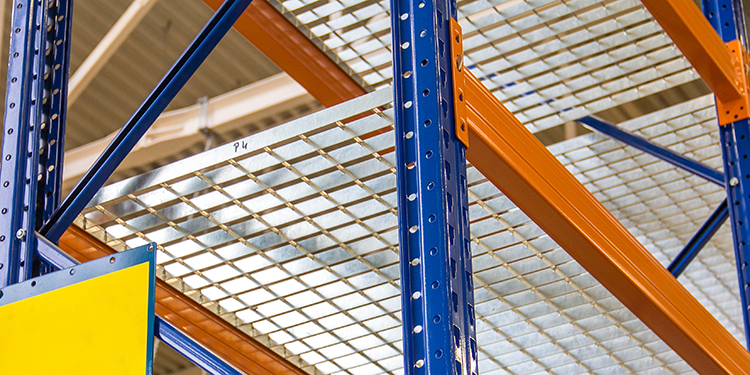The “Dos And Don’ts” Of Rack Decking

Rack decking products — such as welded wire, cold-formed light gauge, bar grating, and structural lumber — are accessories placed on industrial steel storage rack beams to span the distance between them. If you plan to add these accessories to a new or existing pallet rack structure, there are a variety of responsibilities to be considered prior to doing so.
In addition to publishing the original standard ANSI MH26.2-2017: Design, Fabrication, Testing and Utilization of Welded Wire Rack Decking (note, this document is currently being revised as “Specification for the Design Testing and Utilization of Industrial Storage Rack Decking” to encompass all types of decking products), the members of RMI have also assembled a list of decking owner “Dos and Don’ts.” Following these recommendations will enhance both the integrity and reliability of the decking, as well as reduce the risk of injury for workers as they perform their tasks in and around the racking.
Decking Owner Dos…
- Do understand that because decking is an accessory to a racking structure, the load calculations (capacity ratings) for it are different than those used to design and engineer a storage rack.
- Do submit the dimensional specifications and load capacity rating of the rack to the deck manufacturer prior to production when purchasing rack decking. This ensures that the decking will fit the system, and that the deck load capacity matches (or exceeds) the application. Not doing so can create a weak point in the system that is more likely to fail and cause a load to fall and potentially injure a worker.
- Do confirm that the decking’s capacity rating is at least identical to that of the rack load beams upon which it will be placed (for example, a beam pair designed for 5,000-pounds will typically require two decks rated at 2,500-pounds each to cover them). That’s because the load — or the pallet dimensions — stored upon the rack today could change in the future.
- Do understand that load capacity plaques are not required for rack decking (as they are for the rack structure), yet most users will assume the capacities are the same.
- Do share any special application requirements, such as hand stacking or point loading, with the decking manufacturer prior to production, so as to ensure the resulting design accommodates these unique needs.
- Do work with a decking supplier who verifies the safe structural performance of the decking design through a comprehensive testing procedure, as outlined in section 7 of ANSI MH26.2-2017.
Decking Owner Don’ts…
- Do not ever use storage rack decking for any purpose other than uniformly distributed load For applications that require hand stacking or point loading, a deck manufacturer can help design a deck to fit that particular use.
- Do not permit employees to stand upon rack decking or walk across it, as it is not engineered for this purpose. Doing so creates a point load that puts a concentrated weight on a specific area of the decking, potentially causing it to bow, buckle or sag — and subsequently fall through the rack beams. This can be very dangerous for an operator, potentially resulting in injury or death.
- Do not use decking that has not been designed specifically for a given rack structure.
- Do not install decking with a capacity rating less than that of the rack rating of a pallet position, as users are likely to assume the two are the same. Best practice is that the deck strength is greater than or equal to the rack rating for an individual pallet position.
Looking for the full ANSI MH26.2-2017: Design, Fabrication, Testing and Utilization of Welded Wire Rack Decking standard? It is available for purchase, here.


